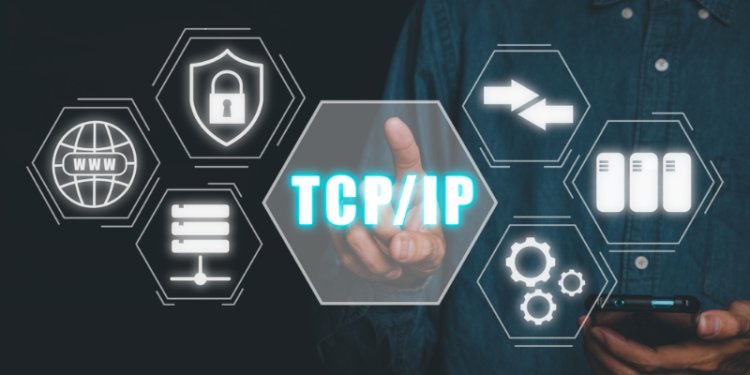How Does the TCP/IP Model Work in Networking?
Learn how the TCP/IP model works in networking by enabling reliable communication, ensuring data transfer, and supporting global connectivity across networks.

The TCP/IP (Transmission Control Protocol/Internet Protocol) model is the backbone of modern networking. It defines how data is transmitted across the internet and private networks, ensuring seamless communication between devices. Unlike the OSI model, which has seven layers, the TCP/IP model is more simplified, consisting of four layers. Understanding how TCP/IP works is crucial for network engineers, IT professionals, and anyone involved in networking. Enrolling in a CCNA Course in Chennai at FITA Academy can help professionals gain in-depth knowledge of TCP/IP and its applications in real-world networking.
The Four Layers of the TCP/IP Model
The TCP/IP model is divided into four main layers, each serving a specific function in data transmission. These layers include the Network Interface Layer, the Internet Layer, the Transport Layer, and the Application Layer. Each layer plays a vital role in ensuring that data is sent and received correctly across networks.
Network Interface Layer (Link Layer)
The Network Interface Layer, also known as the Link Layer, is responsible for connecting devices within the same network. It deals with the physical transmission of data over network hardware such as Ethernet and Wi-Fi. This layer defines how data packets are physically sent across a network, manages hardware addresses (MAC addresses), and ensures data frame synchronization. It relies on network interface cards (NICs) and routers to establish connections. By facilitating device communication within a local network, this layer ensures that data can move efficiently before progressing to higher layers.
Internet Layer
The Internet Layer is responsible for routing data between different networks, enabling devices to communicate even if they are not directly connected to the same local network. It uses the Internet Protocol (IP) to address and route data packets while ensuring logical addressing. This layer also handles packet fragmentation and reassembly, ensuring that data reaches its destination even when passing through multiple networks. It is the foundation of global communication, making sure that data is transmitted accurately from sender to receiver, regardless of their geographical location. Enrolling in a Networking Course In Chennai can help you understand these concepts in depth.
Transport Layer
The Transport Layer ensures reliable data transmission between devices by providing error checking and flow control mechanisms. It manages data segmentation and reassembly, allowing smooth communication between applications running on different devices. The two primary protocols used in this layer are the Transmission Control Protocol (TCP) and the User Datagram Protocol (UDP). TCP ensures reliable, ordered, and error-checked delivery of data packets, making it suitable for applications such as web browsing and email. UDP, on the other hand, provides faster, connectionless communication with minimal overhead, which is ideal for video streaming and online gaming. By handling data flow efficiently, this layer ensures that messages are transmitted accurately between networked applications.
Application Layer
The Application Layer is the topmost layer of the TCP/IP model and interacts directly with end-users. It provides essential services such as web browsing, email, and file transfers. Some of the most common protocols within this layer include the Hypertext Transfer Protocol (HTTP/HTTPS) for web browsing, the Simple Mail Transfer Protocol (SMTP) for email communication, and the File Transfer Protocol (FTP) for file transfers. By using standardized protocols, this layer ensures that different applications can communicate effectively across networks. A Networking Online Course can help you understand these protocols in detail.
How Data Flows Through the TCP/IP Model
When a user sends data over a network, it passes through all four layers of the TCP/IP model in a process called encapsulation. The Application Layer generates and formats the data, which is then segmented into packets by the Transport Layer. These packets are assigned port numbers and provided with error-checking mechanisms before being passed to the Internet Layer, where they are assigned IP addresses and routed to their destination. Finally, the Network Interface Layer converts the data into bits and transmits it through physical network devices. When the data reaches its destination, the process is reversed through decapsulation, ensuring that it is correctly received and interpreted.
Importance of the TCP/IP Model
The TCP/IP model is fundamental to networking for several reasons. Its scalability allows it to support large networks, including the global internet. It promotes interoperability by enabling communication between different devices and operating systems. The model ensures reliability through error detection and correction mechanisms, making data transmission accurate and efficient. Security measures such as encryption and authentication mechanisms help protect data at various layers, making TCP/IP a vital component in modern networking. A Training Institute in Chennai can provide in-depth knowledge of these networking concepts.
The TCP/IP model is the foundation of modern networking, enabling seamless communication across the internet. By understanding its four layers—Network Interface, Internet, Transport, and Application—IT professionals can optimize network performance, troubleshoot issues, and enhance security. Whether managing local networks or global data transfers, the TCP/IP model remains an essential framework for efficient and reliable communication.
What's Your Reaction?

















